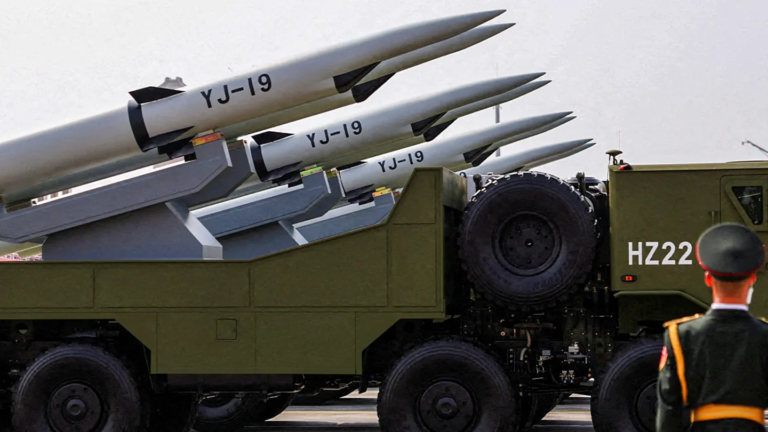
Italy’s right-wing Prime Minister Giorgia Meloni is traveling to the US to meet Donald Trump. Tariffs are the big topic under discussion. Does Meloni speak for the EU — and what might she be able to achieve?
The right-wing Italian Prime Minister Giorgia Meloni will be in Washington on Thursday for a meeting with US President Donald Trump. News agencies agree that the visit will focus particularly on the tariff dispute between the United States and the European Union.
Tensions have eased somewhat since the trip was first announced. The EU paused retaliatory tariffs on steel and aluminium after Trump announced a 90-day suspension of 20% tariffs on the EU.
European Commission President Ursula von der Leyen has said the stay on tariffs gives negotiations with the US another chance.
Meloni wants to talk tariffs
Despite the current detente, Teresa Coratella, the deputy head of the European Council on Foreign Relations (ECFR) office in Rome, anticipates that Meloni’s main goal is still to negotiate tariffs.
Coratella, as well as Leo Goretti, head of the Italian foreign policy program at the Italian Institute of International Affairs (IAI), expect Meloni will try to use her apparent good relationship with Trump to find a solution to the EU–US tariff conflict.
Meloni was the only European head of government to attend Trump’s inauguration in January. Earlier that month, when Meloni visited Trump at his Mar-a-Lago estate, he praised her as a “fantastic woman.” In recent months, Italian sources have often stressed that the Italian government wants to act as a “bridge” between the US and the EU.
What is Meloni’s approach?
Ahead of her trip, Meloni told business leaders that she supported a European Commission proposal for zero tariffs between the US and the EU. The Reuters news agency, citing a draft speech, said she would adhere to this position on her visit to Washington.
Von der Leyen has often endorsed a zero-for-zero tariff agreement between the EU and the US, most recently in a post on X last week.
However, Goretti calls Meloni’s approach to the US a “gamble.”
“However close ideologically [Meloni] may be to Trump, she can’t align with the US against Brussels,” Goretti said.
Italy, he added, can’t afford to break away from the EU, especially not economically.
Meloni, who heads the right-wing party Fratelli d’Italia (Brothers of Italy), is under pressure from domestic economic interests.
In 2024, Italy had a surplus of nearly €40 billion ($45.5 billion) on trade in goods with the United States — the third-highest in the EU, after Germany and Ireland. A total of 10% of all Italian exports go to the US.
But the US market is still much less important for the Italian economy than the EU single market, Goretti stressed.
Does Meloni speak for the EU?
Brussels has repeatedly emphasized that negotiating tariffs is fundamentally the responsibility of the European Commission.
European Commission spokesperson Arianna Podesta said that, in light of the upcoming trip, there had been contact in recent days between EU Commission president von der Leyen and Italian Prime Minister Meloni. Further communication is planned before Meloni’s departure, and Podesta described her outreach as “very welcome and closely coordinated.”
EU Trade Commissioner Maros Sefcovic also visited Washington this week. After the meeting, Sefcovic stressed that the EU was willing to work toward a “fair deal,” including the offer of zero tariffs on industrial goods. He noted in a post on X that such an agreement would require a “significant joint effort on both sides.”
What can Meloni achieve?
Goretti believes that, for the EU, much will depend on how Meloni positions herself in Washington. He points out that she vacillates between advocating the zero-tariff policy and criticizing the EU.
If she sticks to the zero-tariff line, this will be well received in Brussels and by other member states.
If, on the other hand, she criticizes the EU and shifts the focus of the discussion to internal issues, such as excessive bureaucracy and overregulation, it will send a negative signal to Brussels.
Goretti is skeptical about whether Meloni will achieve any concrete results in Washington, but he believes one possible outcome could be a statement pointing toward a common transatlantic market.
This could include aligning against common challenges, such as those posed by China.
Political scientist Coratella is even more skeptical.
Meloni has no official mandate from the European Commission, she said, and thinks that France, in particular, isn’t happy about the visit.
Coratella thinks it is likely that Meloni’s trip will be carefully staged and publicly presented as a big show of alignment with Trump.
This, however, would make Meloni’s position within the EU more difficult, Coratella said.





